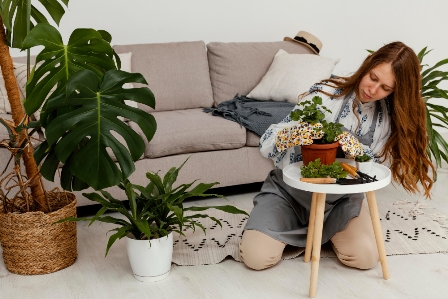Living in a small space presents unique challenges when it comes to interior design. However, with the right approach, even the tiniest of spaces can be transformed into stylish and functional havens. In this article, we’ll explore effective decorating tips for compact living, ensuring that small spaces don’t compromise on style or comfort.
Maximize Vertical Space
Small spaces often lack floor area, making it crucial to maximize vertical space. Wall shelves, hanging organizers, and tall bookcases are excellent options to make the most of your walls. By going vertical, you free up valuable floor space, creating an illusion of a larger area.
Multifunctional Furniture
Investing in multifunctional furniture is key to optimizing small living spaces. Consider pieces like sofa beds, storage ottomans, or fold-out desks. These items serve dual purposes, providing comfort and functionality without sacrificing space.
Light Color Palette
Light colors play a vital role in opening up small spaces. Opt for a neutral color palette, such as whites, creams, or pastels. Light colors reflect natural light, making the room feel more spacious and inviting.
Strategic Lighting
Proper lighting is essential in small spaces. Strategically placed lights can create the illusion of depth and highlight specific areas. Use a combination of overhead lighting, task lighting, and ambient lighting to enhance the overall atmosphere.
Decluttering Techniques
A cluttered space feels even smaller, so decluttering is a fundamental step in small space design. Keep only the essentials and find clever storage solutions to stow away items that aren’t in use. A tidy space not only looks more significant but also promotes a sense of calm.
Mirror Magic
Mirrors are a powerful tool in small space design. Placing mirrors strategically reflects light and gives the impression of additional space. Consider large mirrors on walls or mirrored furniture to amplify the visual size of the room.
Flexible Storage Solutions
Flexible storage is a game-changer in small living. Furniture with built-in storage, like beds with drawers underneath or coffee tables with hidden compartments, provides ample space to tuck away belongings discreetly.
Scale and Proportion
Choosing furniture that suits the scale of the room is crucial. Oversized furniture can overpower a small space, so opt for pieces that fit comfortably. Maintaining proper proportion ensures a harmonious and visually pleasing environment.
Personalization within Limits
Personalizing your space is essential, even in compact living. However, it’s crucial to do so within limits. Choose small-scale decor items or incorporate personal touches without overwhelming the limited space.
Greenery in Small Spaces
Bringing nature indoors can breathe life into small spaces. Opt for small potted plants or hanging gardens to add a touch of greenery. Plants not only enhance aesthetics but also contribute to a healthier indoor environment.
Nooks and Corners
Utilize every inch of your small space by exploring nooks and corners. These often neglected areas can become functional spaces with the right furniture or decor. Create cozy reading corners or mini workspaces to maximize utility.
Textures and Patterns
Textures and patterns add depth and interest to a small space. While too much can be overwhelming, incorporating subtle textures through cushions, throws, or rugs, and using patterns sparingly, can elevate the visual appeal of your compact living area.
Mobile and Foldable Solutions
Mobile and foldable furniture is a lifesaver in small spaces. Items like rolling carts, foldable chairs, and collapsible tables offer flexibility, allowing you to adapt your space to different needs while saving room when not in use.
FAQs
Utilize vertical space, use light colors, and strategically place mirrors to create the illusion of more space.
Opt for multifunctional furniture, such as sofa beds and storage ottomans, to maximize functionality without sacrificing space.
While it’s possible, light and neutral colors tend to make small spaces feel more open. Consider using bold colors as accents rather than dominant hues.
Embrace decluttering techniques, invest in flexible storage solutions, and only keep essential items to ensure a tidy and spacious feel.
Yes, but consider smaller potted plants or vertical gardens to bring nature indoors without overwhelming the limited space.
Conclusion
Decorating a small space requires a blend of creativity and practicality. By maximizing vertical space, choosing multifunctional furniture, and incorporating light colors and strategic lighting, you can turn a compact living area into a stylish and comfortable retreat. Remember, it’s not about the size of the space but how well you utilize it.


